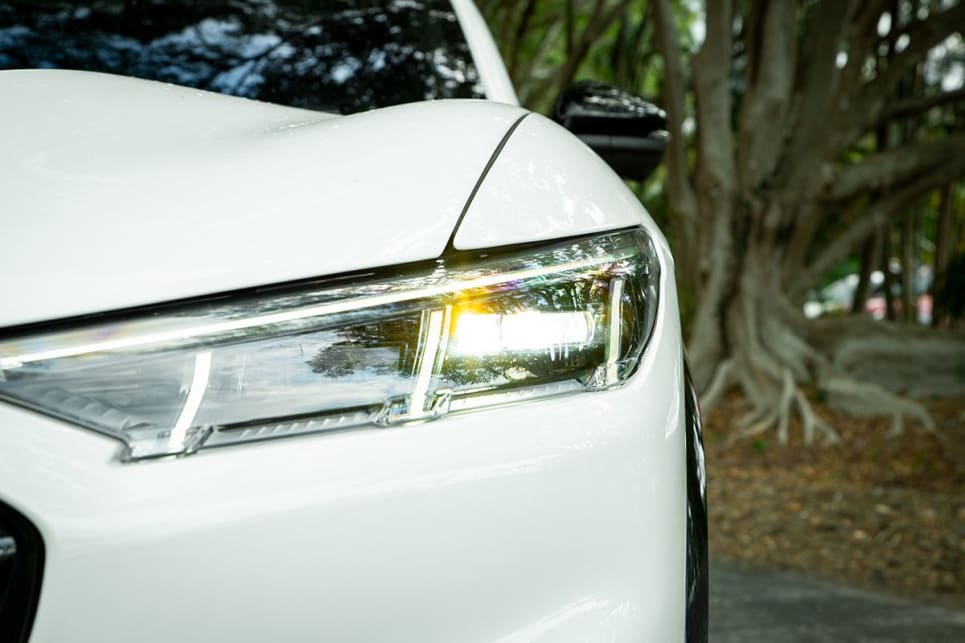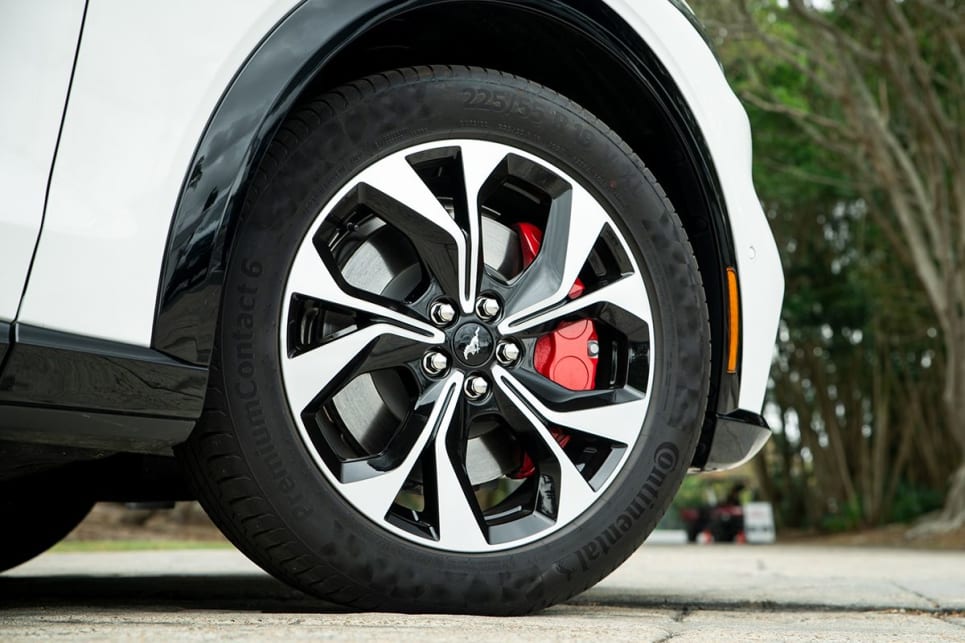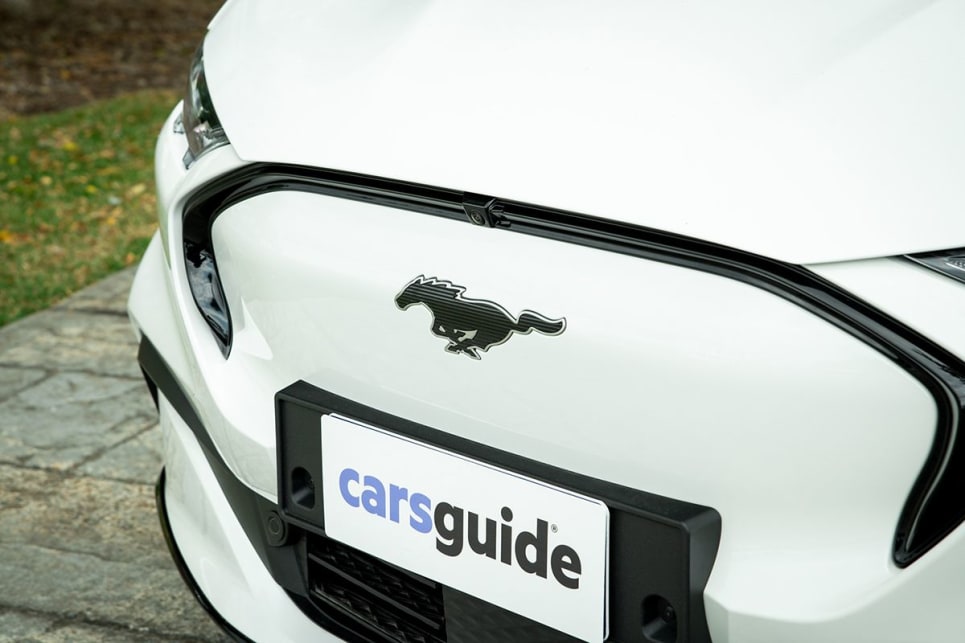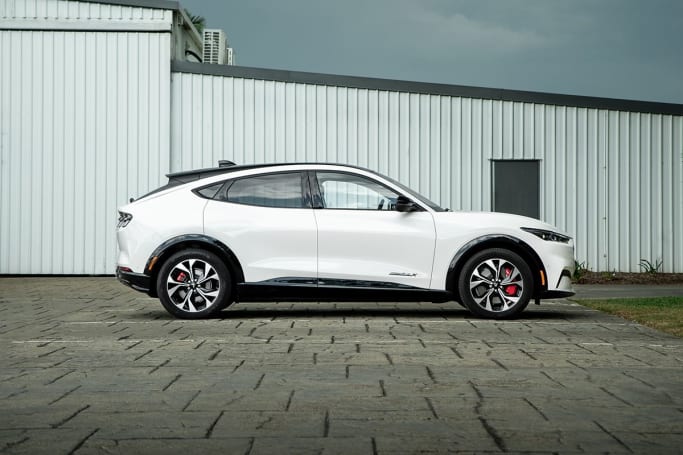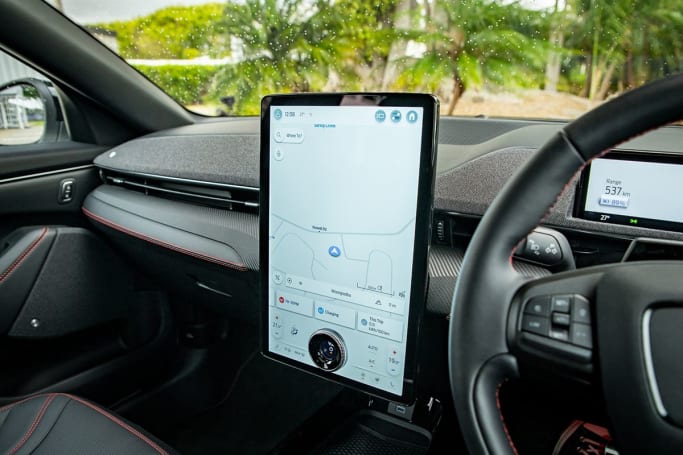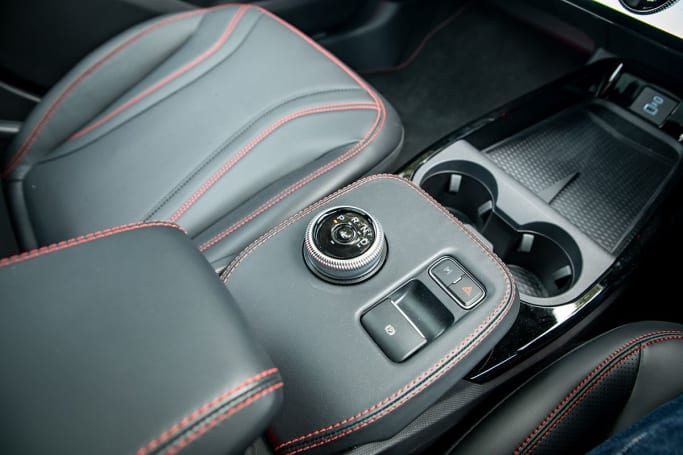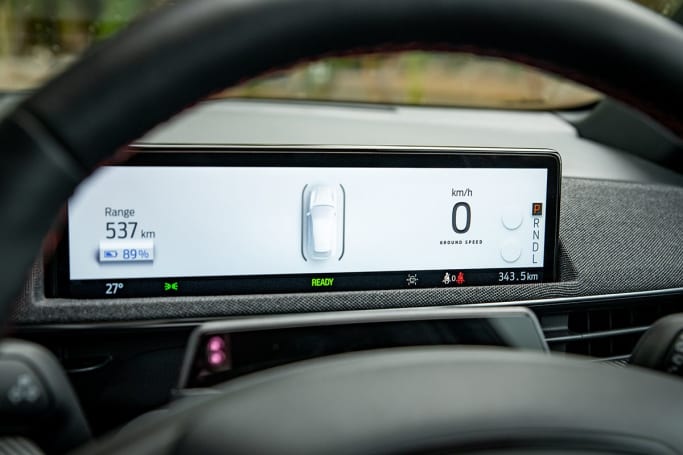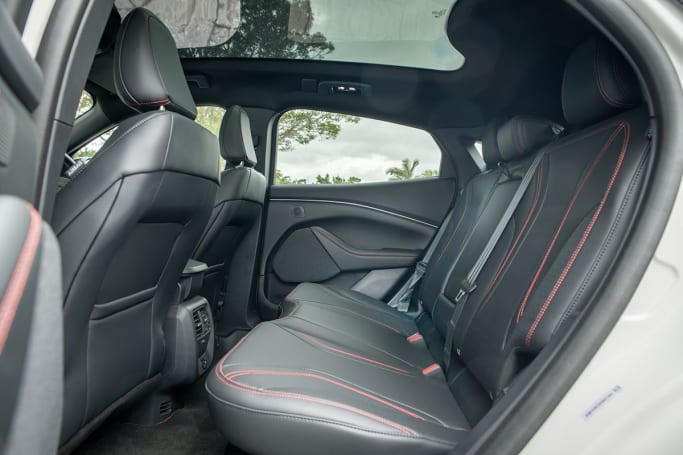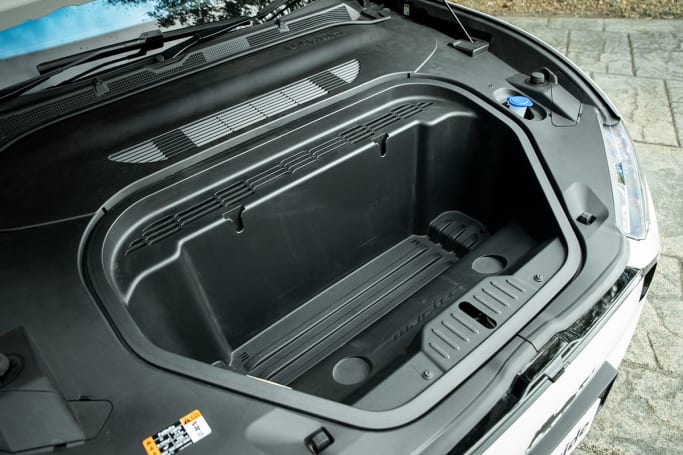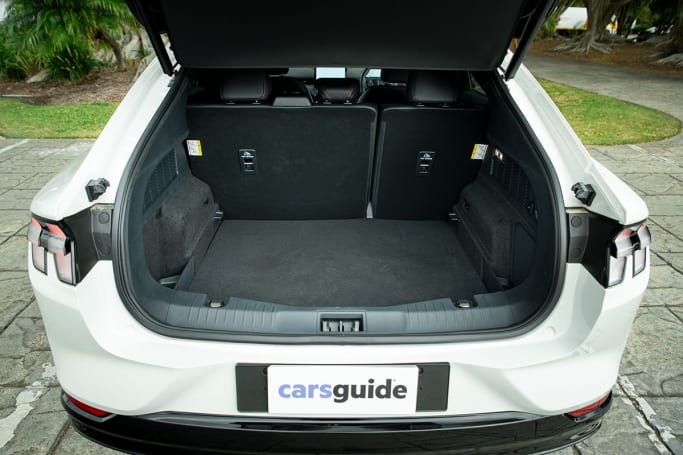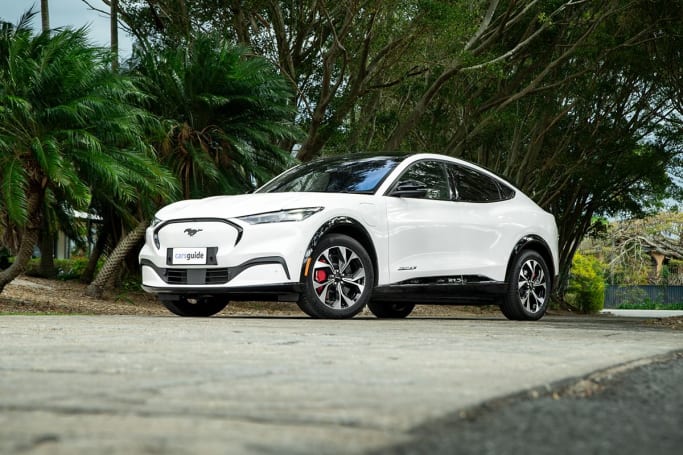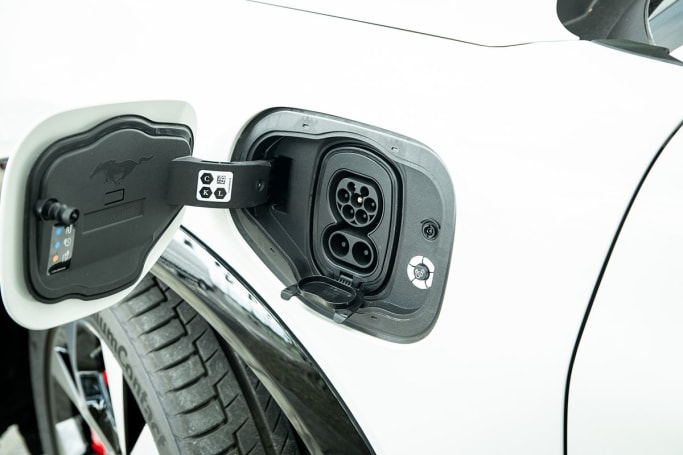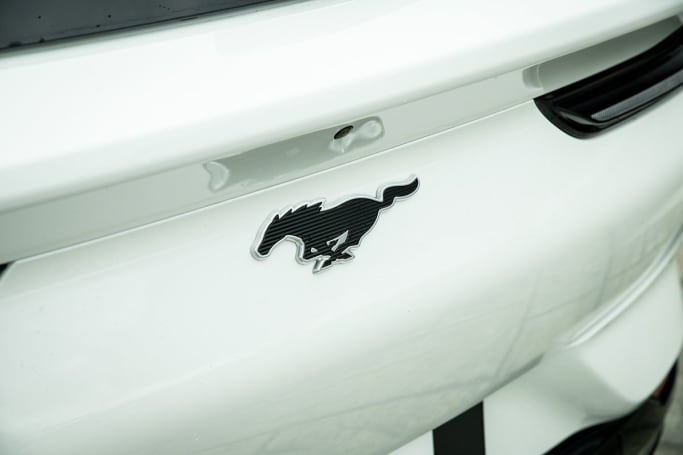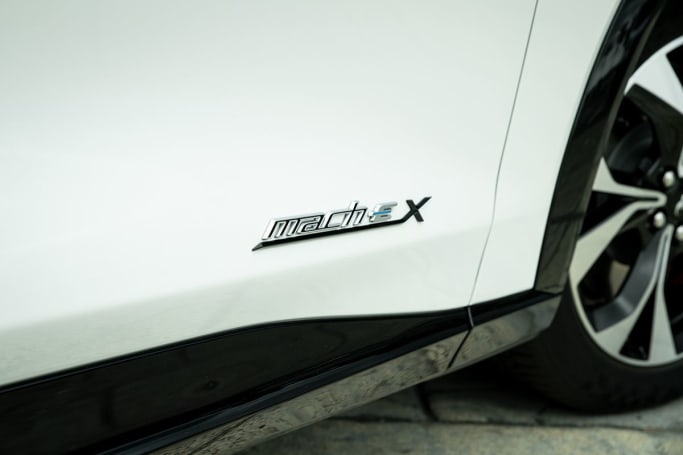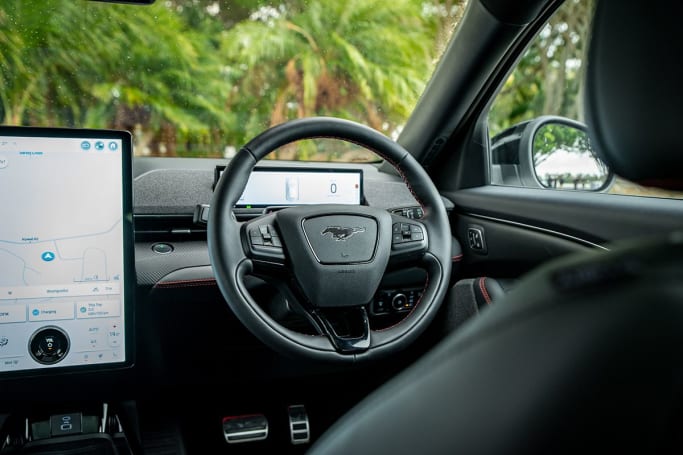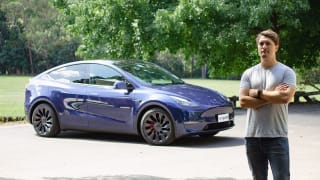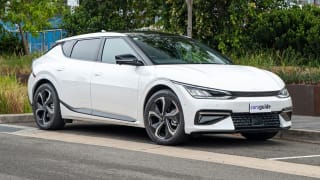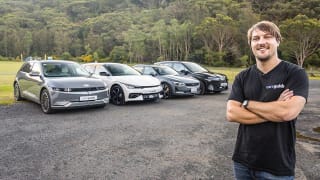Price is key to any new electric car, and the Mach-E doesn’t do anything unexpected. It’s not here to be a new, more affordable mid-sized electric option in Australia, instead leaning on its performance credentials to slice out its own niche amongst its competitors.
Three Mach-E grades arrive in Australia with prices ranging from $79,990 for the most affordable rear-wheel drive Select version, stepping up to $91,665 for the also rear-drive Premium and stretching to $107,665 for the all-wheel drive GT.
Before you start adding on-road costs or state-based discounts then, the Mach-E competes with mid-grade or higher-end versions of the Hyundai Ioniq 5, Kia EV6, Tesla Model Y - and maybe the more sedan-like Polestar 2.
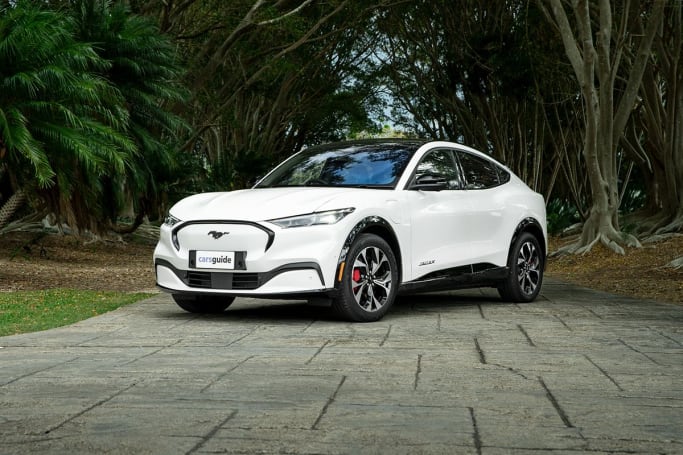
Range is, of course, key to the price equation for any EV, and this is where the main differences lie between the variants, which are remarkably similar when it comes to standard equipment. The base Select gets a smaller, more affordable 71kWh battery pack. It grants the entry-point car a driving range of 470km on a single charge. Not bad at all.
Next up, the Premium grade remains rear-wheel drive, but swaps up to a larger 91kWh battery unit, delivering one of the longest ranges of any EV on the Australian market, at 600km.
Finally, the top-spec GT moves to all-wheel drive, almost doubling its power outputs, but maintains the same 91kWh battery, for a reduced but still respectable range of 490km between charges.
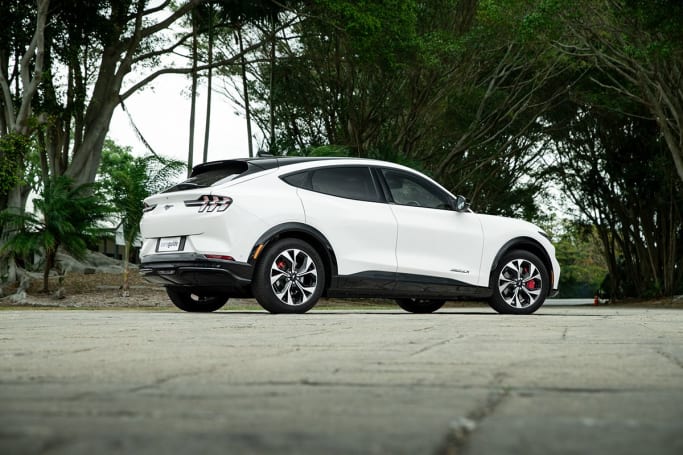
Standard equipment is impressive, too. Even the base Select scores items usually reserved for high-spec cars, like synthetic leather interior trim with heated and power adjust front seats, a panoramic sunroof, and a Bang & Olufsen 10-speaker premium audio system.
Other standard equipment includes the impressive 15.5-inch portrait-oriented multimedia touchscreen with wireless Apple CarPlay and Android Auto connectivity, a matching wireless phone charging bay, a 10.2-inch digital instrument cluster, 19-inch alloy wheels (with aero panels), a 360-degree parking camera, LED headlights, and the full safety suite.
The Premium grade scores higher-spec LED headlights, contrasting piano black exterior trim, black headliner and red stitching for the interior, as well as metal scuff plates and pedal trims.
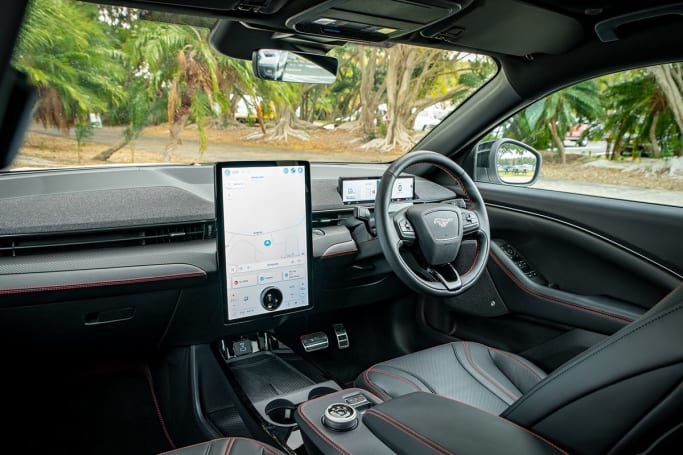
The top-spec GT has the most noticeable bump in equipment, with the addition of adaptive suspension, 20-inch alloy wheels, a Brembo brake package, GT styling touches inside and out, ambient interior lighting, and sporty front seats with additional bolstering.
The issue the Mach-E faces, then, is not range or standard equipment. It is simply not offered in a form which is as competitive with price-leading versions of its core rivals.
Of course, most anticipated vehicles like this are picked up primarily in high-grade forms to begin with, Ford telling us nearly 40 per cent of pre-orders have been for the GT, but it’s notable there’s no circa-$70,000 entry-point variant as there is for the EV6, Ioniq 5, and Model Y.



